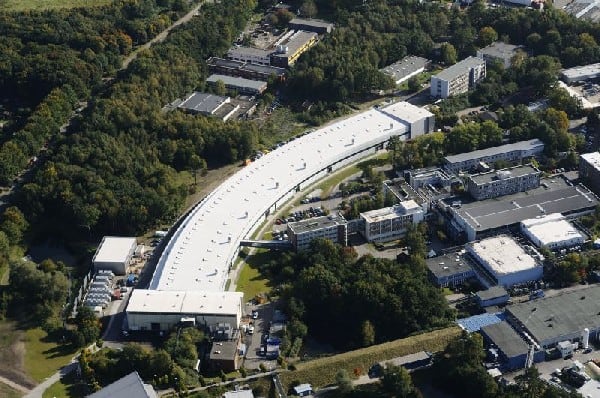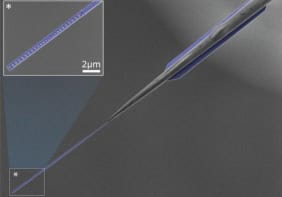
Physicists at the DESY research lab in Germany have successfully accelerated the first beam of electrons into what is set to be the world’s most brilliant X-ray light source. The €225m PETRA III synchrotron in Hamburg will allow researchers to study nanometre-scale objects such as quantum dots and to resolve the structure of proteins. The first user experiments are set to start in early 2010.
The PETRA-III synchrotron is a third-generation light source that produces intense beams of X-rays from electrons circulating in its 2.3 km circumference storage ring. Electrons are fed into the ring after having first been accelerated to 450 MeV in a linear accelerator and then injected into a particle accelerator, DORIS, which increases their energy to 6 GeV.
The electrons in the PETRA storage ring emit X-rays as they are passed through “undulators”, which force the electrons to travel along a sinusoidal path. The X-rays from PETRA will be fed into 14 beam lines housed in a 300 m experimental hall connected to the storage ring, which will operate up to 30 experiments in biology to condensed-matter physics.
With wavelengths ranging from 6.2 nm to 0.03 nm, the X-rays will be used by researchers to probe the structure and properties of materials. “PETRA will focus on hard X-rays science especially in the wavelength range of 200 keV,“ says Edgar Weckert director of photon science at DESY.
PETRA-III will also be able to produce X-ray beams with a diameter of 1 nm even at such high electron energies. “This is what makes the facility so unique,” says Weckert, “PETRA will enable us to resolve the structure of very small objects.”
PETRA-III’s storage ring was originally built in 1978 as an electron-positron collider and in 1979 researchers used it to obtain the first direct evidence for gluons — carriers of the strong force. In 1990 PETRA was then used as an accelerator for the 6.3 km circumference HERA collider before it closed in June 2007. The upgrade began shortly afterwards.



